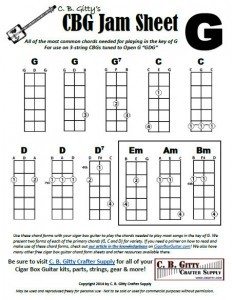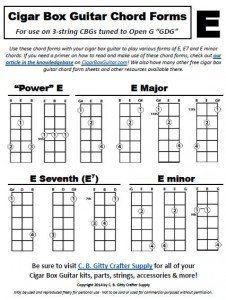 We’ve just added a great new resource to the knowledgebase: Gitty’s Jamming Guides for 3-string Cigar Box Guitar!
We’ve just added a great new resource to the knowledgebase: Gitty’s Jamming Guides for 3-string Cigar Box Guitar!
This collection consists of 3 printable sheets that show you all of the chords needed to play most songs written in the keys of C, G and D – majors, minors and sevenths. These were designed with jam sessions in mind – with these on the table in front of you, you’ll rarely be at a loss for how to strum along with most popular songs!
Click the image to the left to go to the knowledgebase page, where you can click to view all 3 printable jamming sheets!


